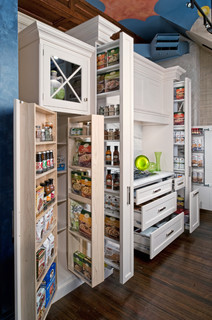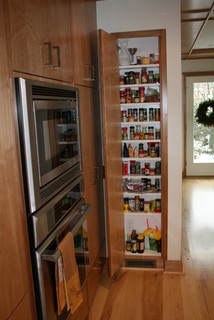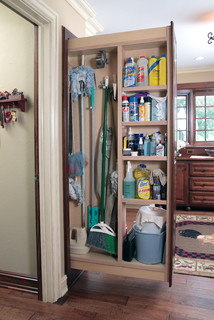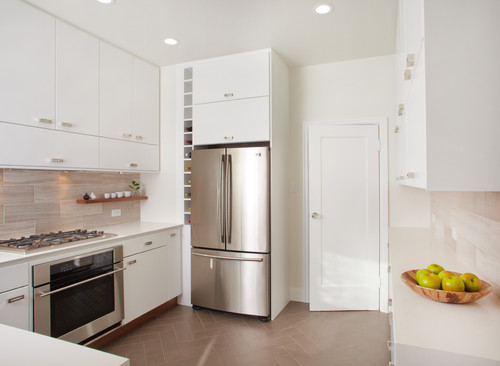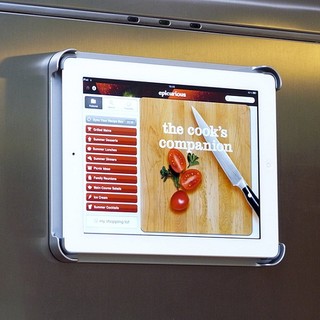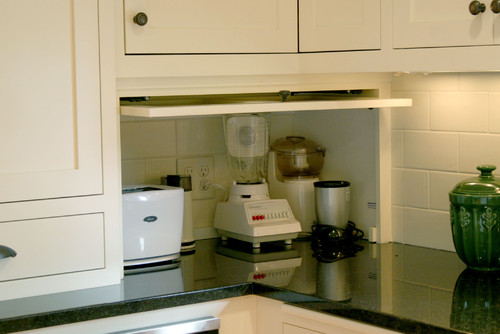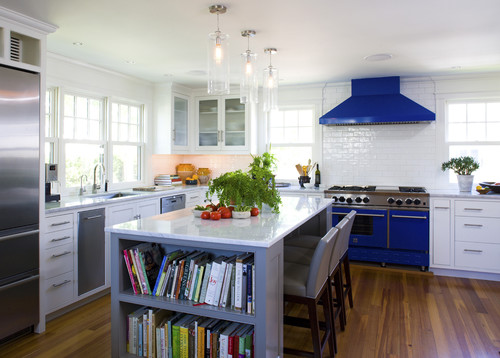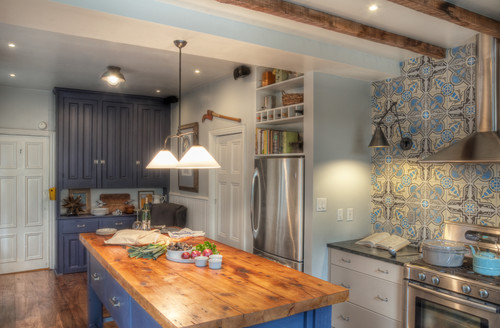Going Up: Vertical Storage Holds More Kitchen Stuff
 Wednesday, February 12, 2014 at 12:54PM
Wednesday, February 12, 2014 at 12:54PM Almost every kitchen can benefit from vertical storage. You can, of course, plan for vertical storage in a new kitchen, but very often you can also find space in an existing kitchen. It is amazing how much and how many different kinds of storage can be packed into a very tall and narrow or shallow space. So look around; maybe you have an empty wall where you can squeeze in more room for what you need.
Here is a wall of tall cabinets just packed with storage in a New York loft. The pantry cabinet on the left has swing-out shelves that allow easier access to food than would deep, stationary shelving. The real stars of this vertical storage, however, are the very narrow pullout cabinets, used here for oils and herbs and located right next to the cooktop where they will be used. The mix of cabinet doors creates a pleasing arrangement when closed.
Spices and oils are natural items for storage in a tall area. Although very shallow, this closet stores a multitude of items. It has been carved from between the studs and finished with a matching cabinet door.
A deeper space accommodates some large apothecary jars, tins and bottles and makes a wonderful display area as well.
Pots and pans take up more precious cabinet space than just about anything else, so hanging them on an otherwise empty wall makes sense. There are rails made specifically for this purpose; galvanized pipe or even some towel bars could work too. Just make sure to anchor them well.
These pots and pans, each hung on their own hook, create an organized display. In addition, this space allows for some shallow shelf storage below.
Everyone needs a broom closet; here the brooms, mops and cleaning supplies are very efficiently housed in a narrow pullout cabinet. Everything is handy and accessible, much easier to grab than from underneath the sink.
Just a few inches of space next to a refrigerator have been used to build wine cubbies here. The cubbies match the width of the spacer below that makes sure the refrigerator has enough clearance to open.
A similar situation: to the right of a window, a slice of space has been appropriated for wine storage. On the left dishware is kept at the ready. These vertical storage units morph into horizontal storage across the tops of the windows here for even more found space.
Barely more than a wall, this extremely shallow area not only stores platters and plates; it acts as a display wall, too.
While there was probably ample cabinet space in this kitchen for a bar, a small sliver of space was found on the end wall to showcase the owner’s whiskey collection. The antique decorative grille provides visual interest and highlights the collection. A similar approach could be used to house bright glassware or smaller serving pieces.
In this narrow galley-style kitchen, there was not enough room for more cabinets. Enter shallow, open, floor-to-ceiling shelves. These create not only extensive storage but a graphic display as well.















